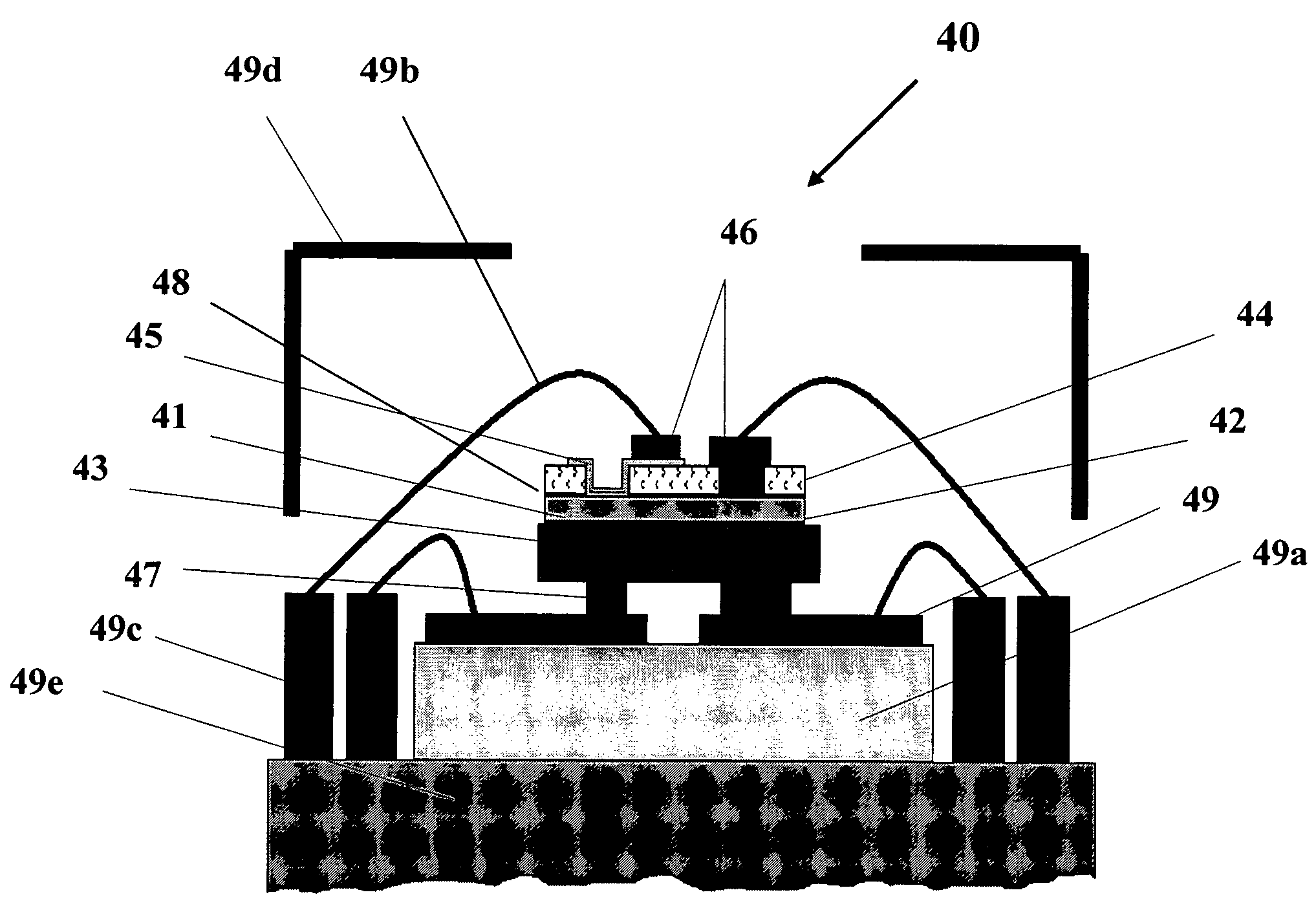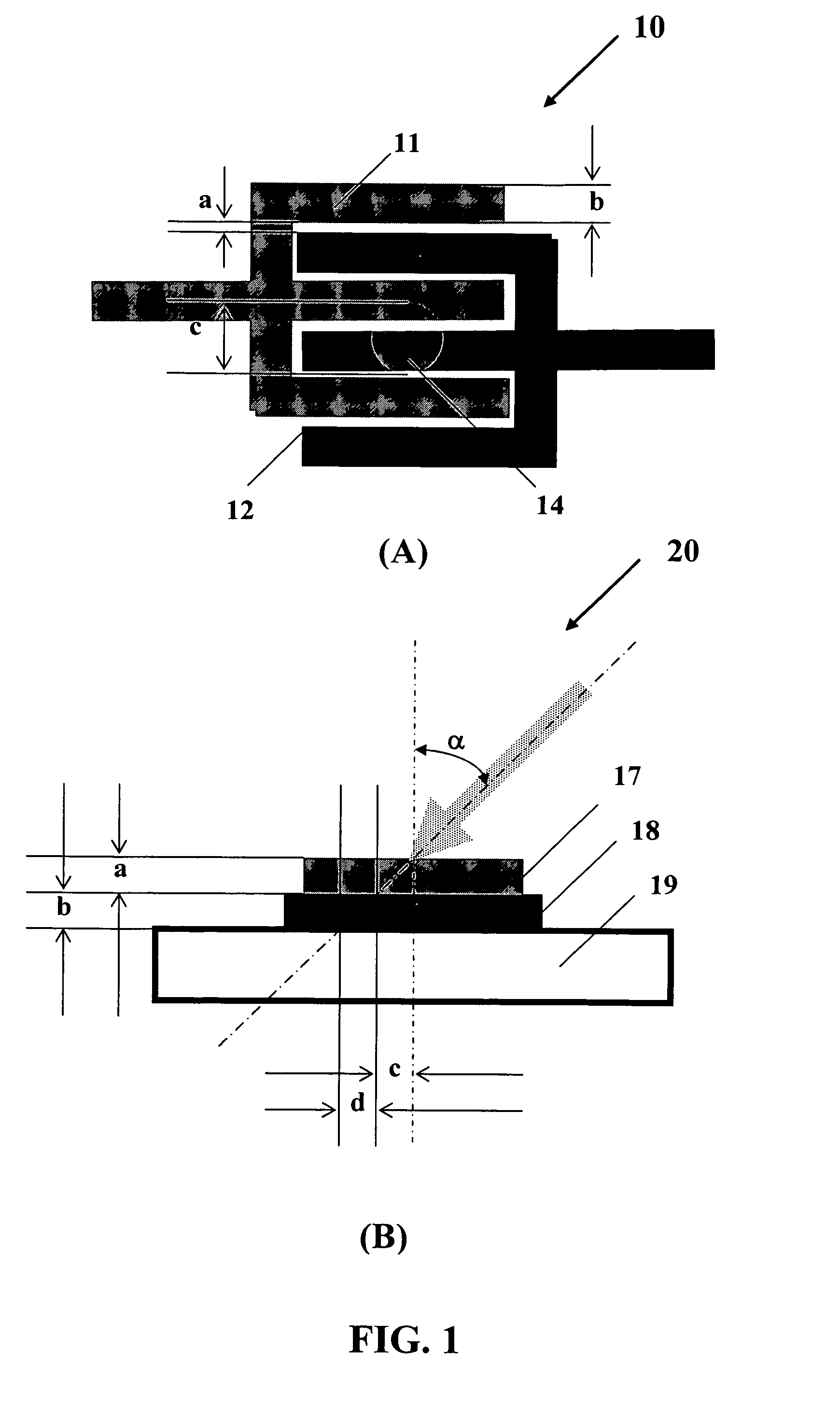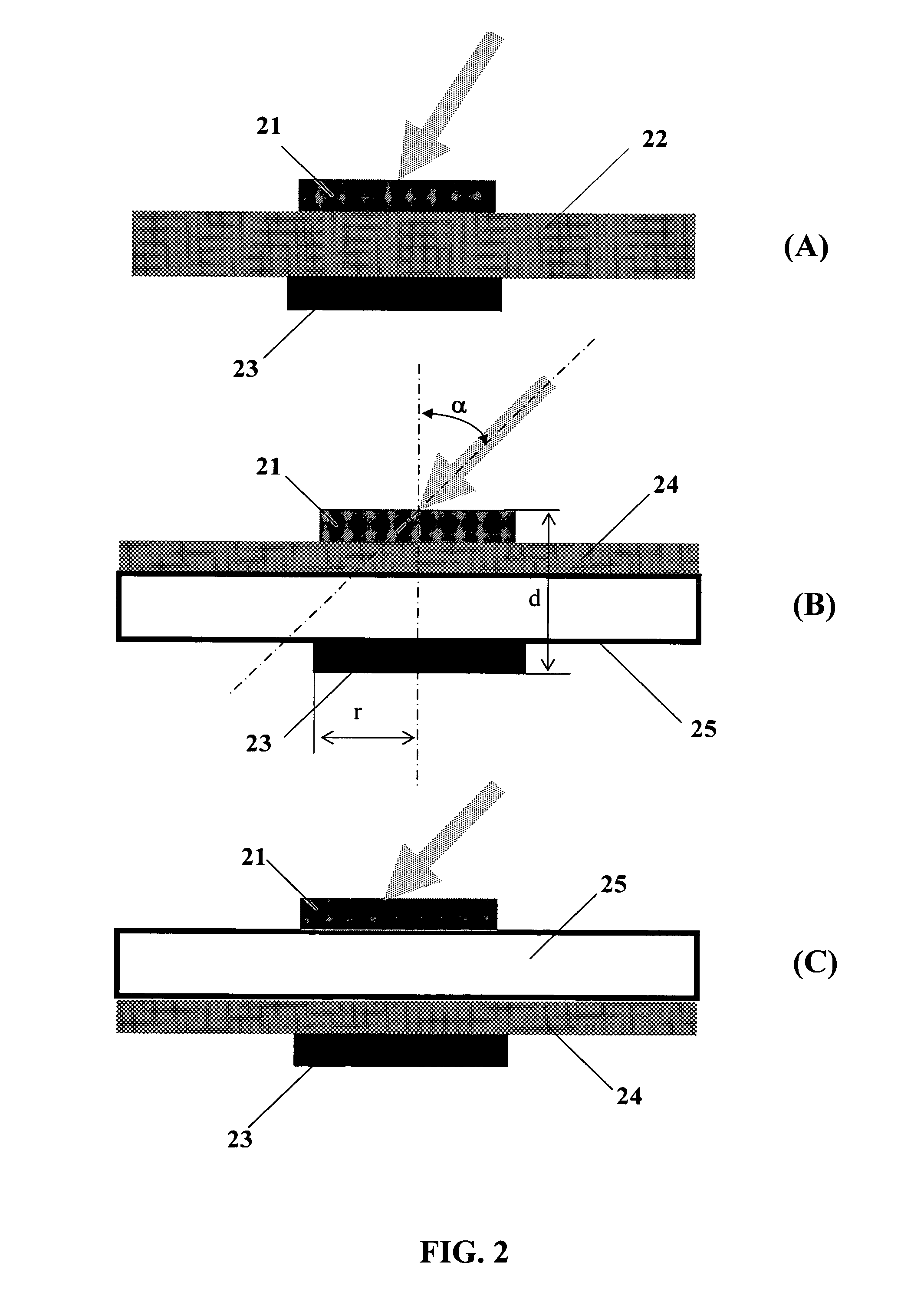Single-chip monolithic dual-band visible- or solar-blind photodetector
a single-chip monolithic, visible-or-solar blind technology, applied in the field of photodetectors, can solve the problems of high sensitivity of used photomultiplier tubes (pmts), low mechanical and temperature strength, and high voltage operation
- Summary
- Abstract
- Description
- Claims
- Application Information
AI Technical Summary
Benefits of technology
Problems solved by technology
Method used
Image
Examples
Embodiment Construction
[0022]The device disclosed herein meets the following basic requirements:
[0023]1) two photosensitive structures are stacked on a single substrate in one embodiment and are interlaced in another embodiment to form a monolithic photodetector;
[0024]2) one structure is sensitive to radiation in a UV band and the second structure is sensitive to radiation in an IR band;
[0025]3) the monolithic photodetector is insensitive to solar or visible radiation;
[0026]4) the monolithic photodetector is capable of time- and electrically-resolved detection of both UV and IR radiation in the same space register;
[0027]5) the two active semiconductor layers and contacts used as photosensitive structures as well as the passive semiconductor layer used to filter out the visible or solar radiation, are stacked on a single substrate in one embodiment;
[0028]6) the photosensitive structures are either diodes (Schottky, p-n, p-i-n, multi-quantum well junctions) or photoresistors formed by deposition of contacts...
PUM
 Login to View More
Login to View More Abstract
Description
Claims
Application Information
 Login to View More
Login to View More - R&D
- Intellectual Property
- Life Sciences
- Materials
- Tech Scout
- Unparalleled Data Quality
- Higher Quality Content
- 60% Fewer Hallucinations
Browse by: Latest US Patents, China's latest patents, Technical Efficacy Thesaurus, Application Domain, Technology Topic, Popular Technical Reports.
© 2025 PatSnap. All rights reserved.Legal|Privacy policy|Modern Slavery Act Transparency Statement|Sitemap|About US| Contact US: help@patsnap.com



